Meat preparations
meat processing
Preparations
Fundamental in our sector is meat production. In Italy, meat production follows strict controls, ensuring freshness and traceability at every stage of the process. From the selection of farms to distribution, we carefully manage each step to provide high-quality, certified meat. We stand out for our focus on animal welfare and environmental impact, with innovative techniques that improve efficiency and reduce waste. We offer meat from different animals and a variety of cuts. Our processing is consistently monitored and of high quality.
- All products
- Ground / pastin
- Hamburger
- Sausages
- Cotechini
- Salted walker / salted tongue
- Tartare

Stages of preparation
All products
1.
Meat reception bovine/pig
The cuts come from the cutting lab or the storage cells. Checks on these products have already been carried out during the previous slaughtering and/or cutting phases
2.
Reception ingredients, additives, guts
Ingredients are defined as the substances used together with meat in the preparation of meat preparations. They also include additives and casings.
3.
Reception materials packing
Miscellaneous materials are defined as products intended to come in contact with meat and packaging (Styrofoam trays, plastic film, etc.).
4.
Supply control
Before being unloaded, ingredients and packaging are checked for suitability. They are subsequently downloaded.
5.
Storage of the ingredients
Ingredients are stored in the ingredient storage room, taking special care so that there is clear separation between them, especially for ingredients containing allergens.
Storage takes place at room temperature for ingredients, additives and collated casings. Storage takes place at controlled T° for natural casings.
6.
Material storage wrapping
Packaging materials are stored in the specific warehouse in an orderly and dust-protected manner and divided by lots.
7.
Entry into laboratory Constitution of lots
The meat is transferred directly from the cutting lab or storage cells to the entrance of the processing room, where the processing batch is formed.
The laboratory is kept at a temperature below +12°C at all times during processing.
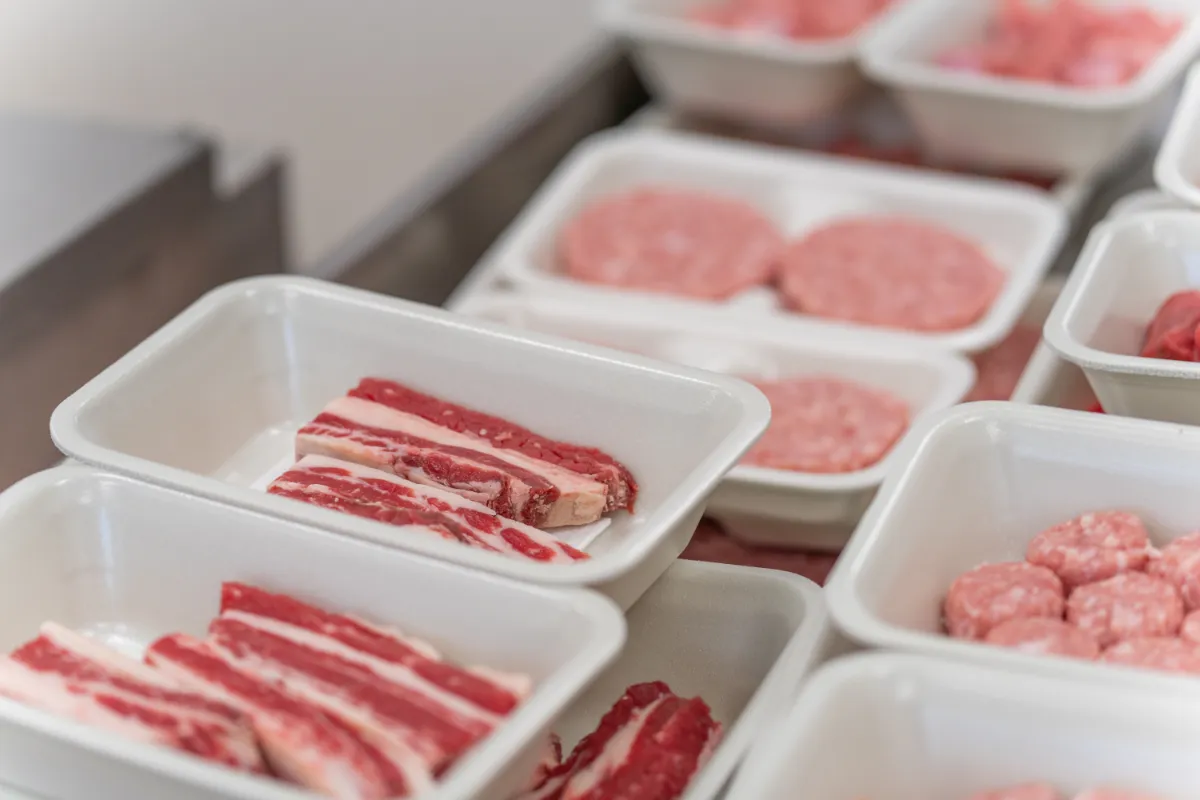
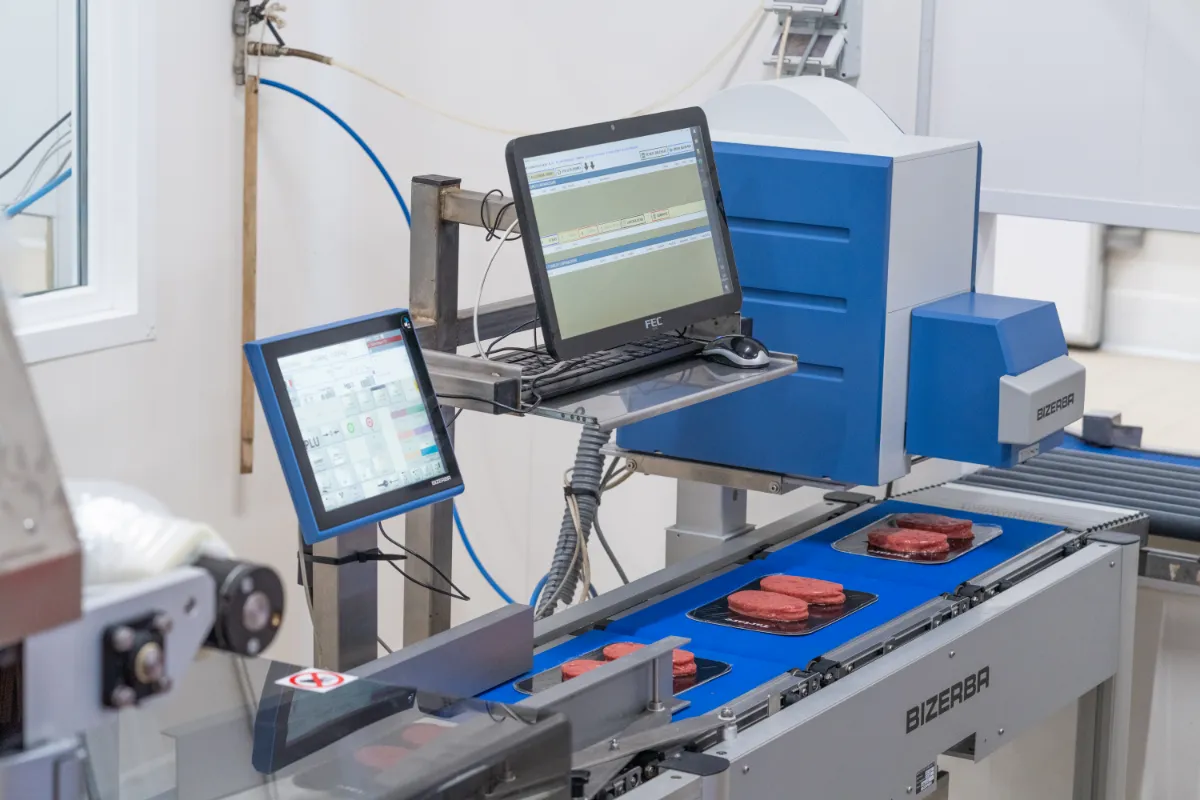
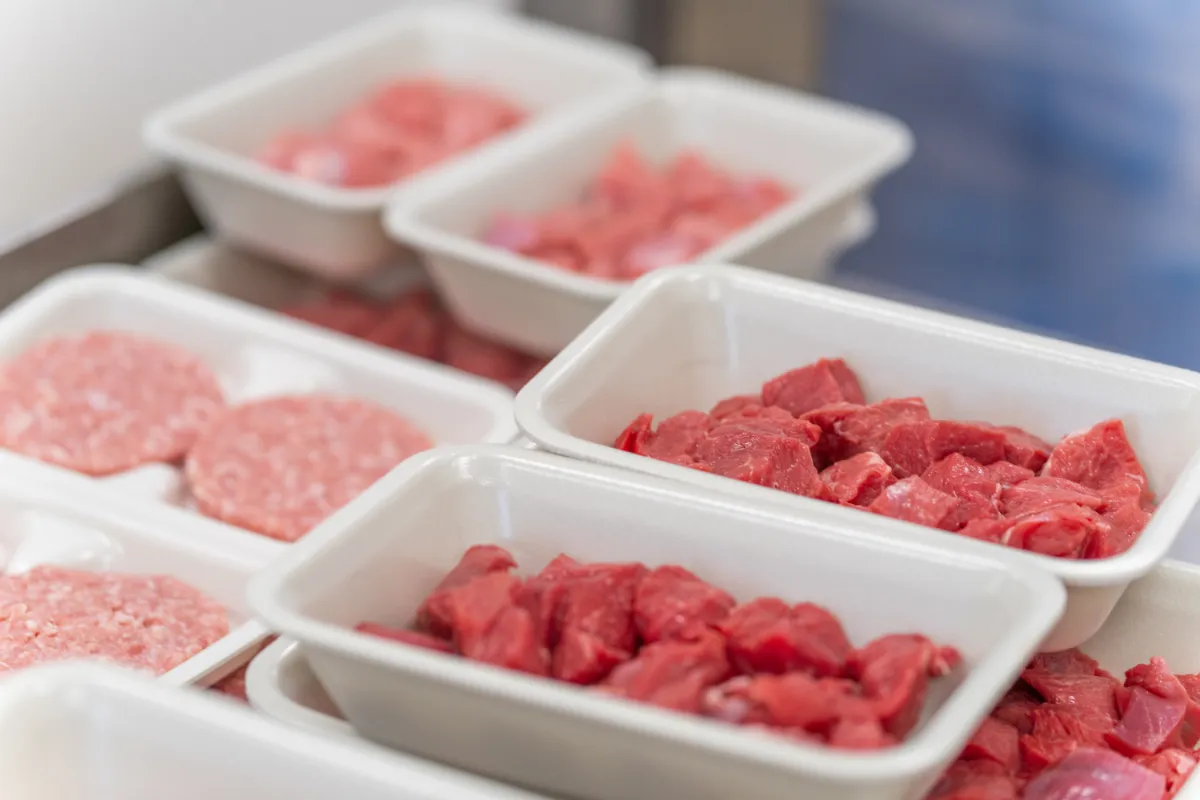
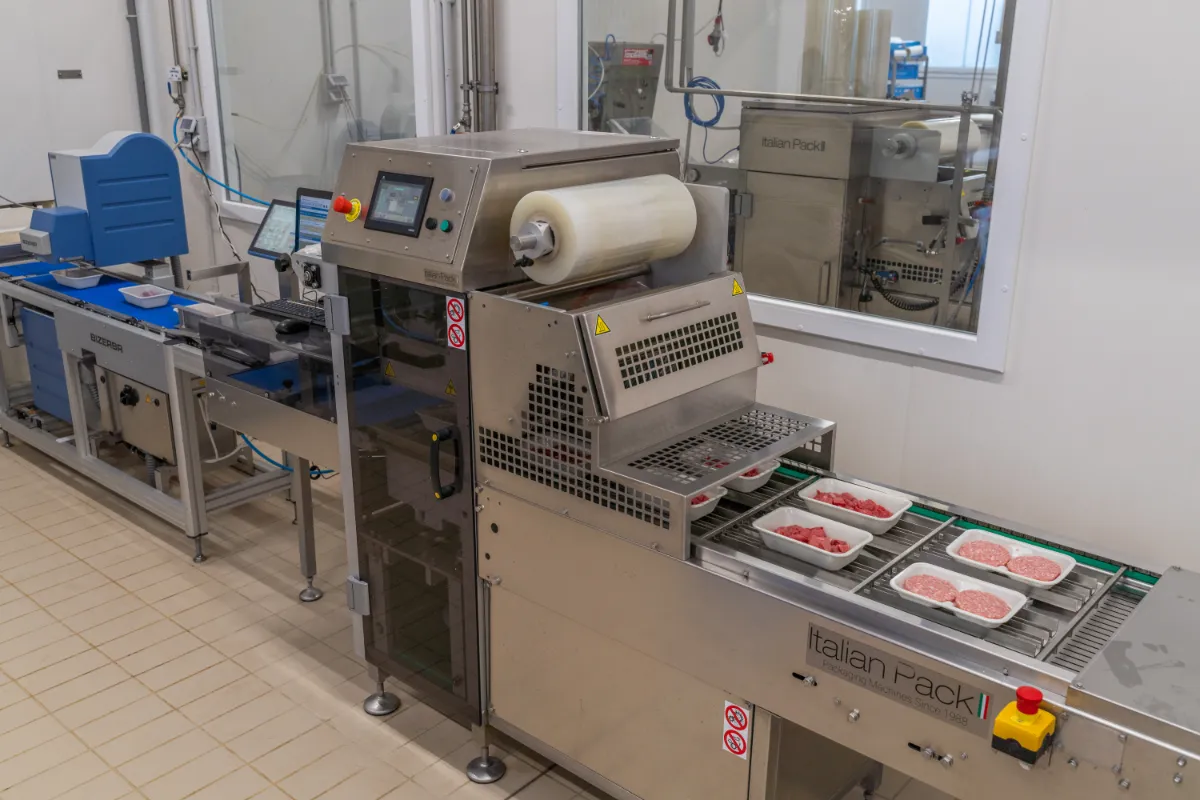
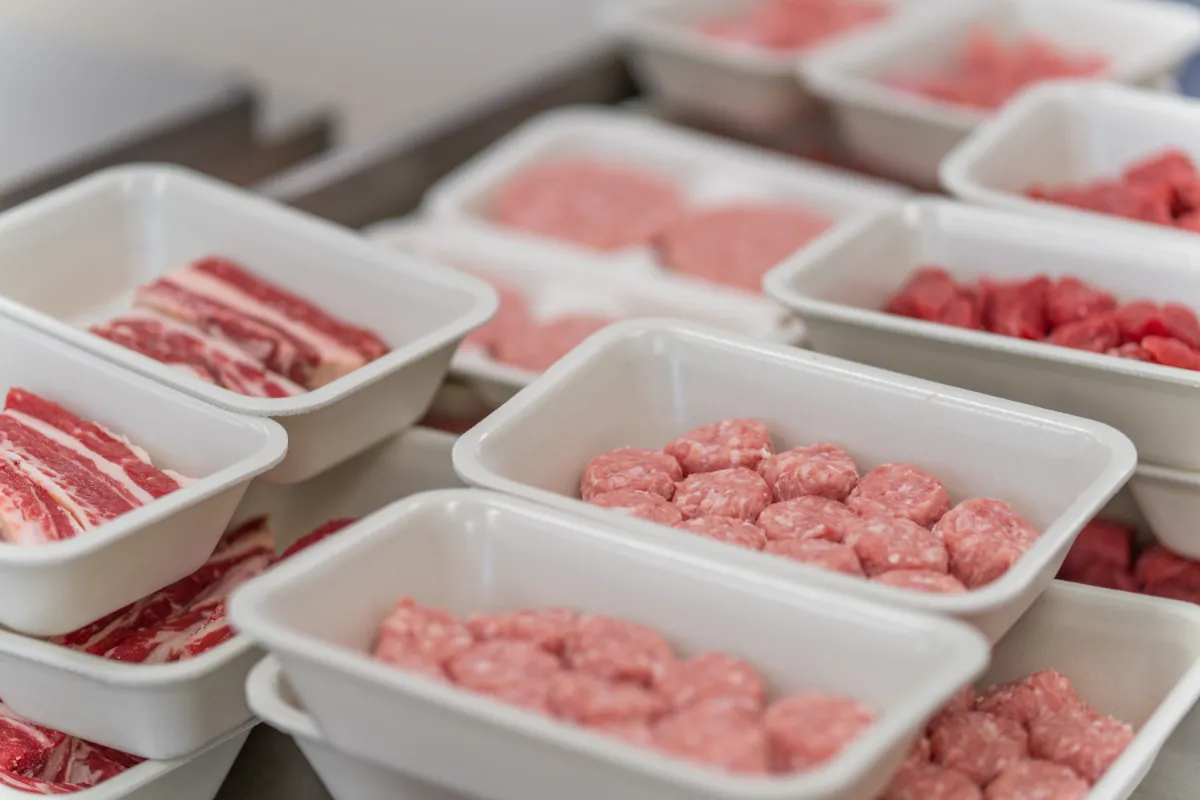
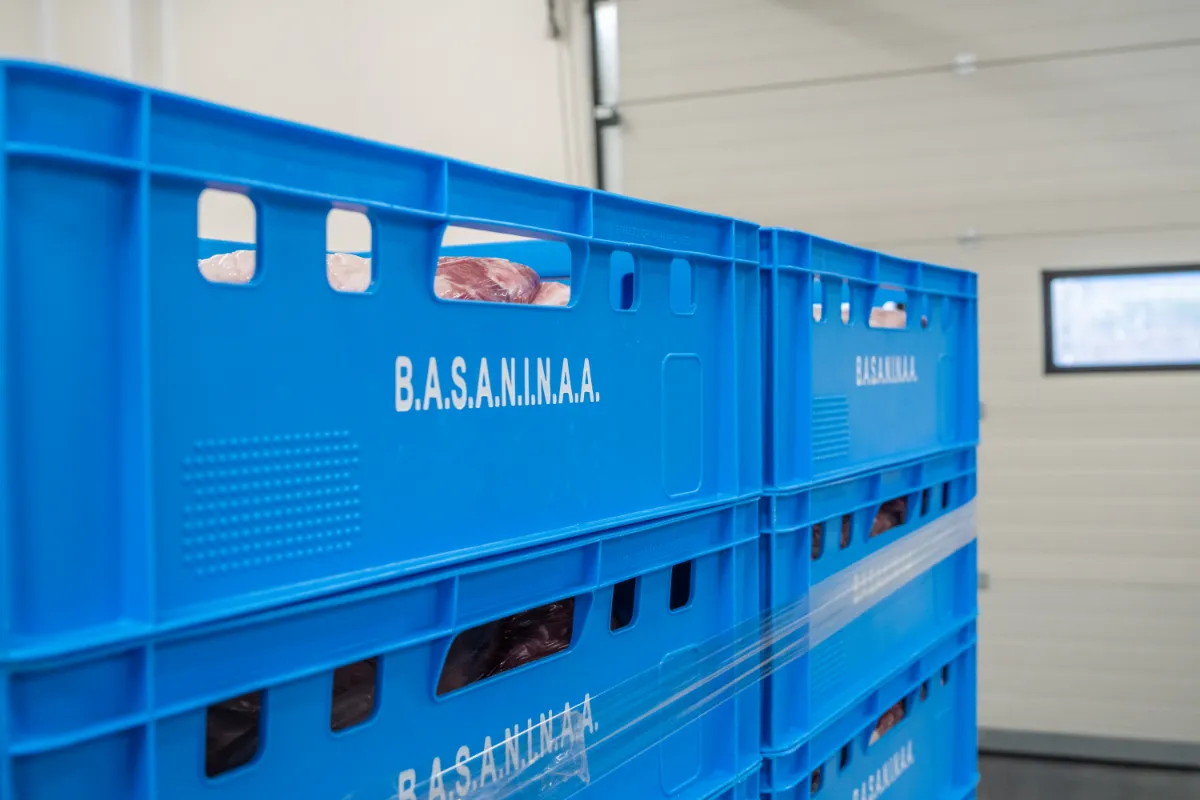
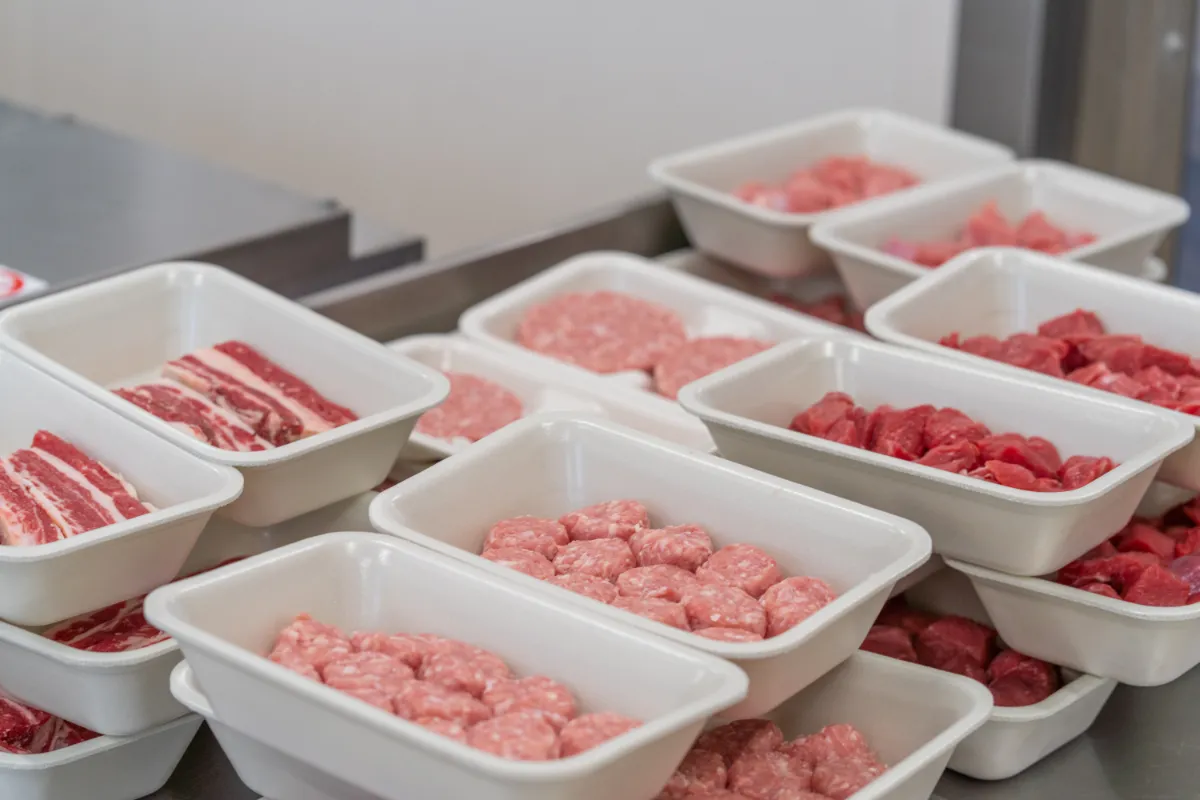
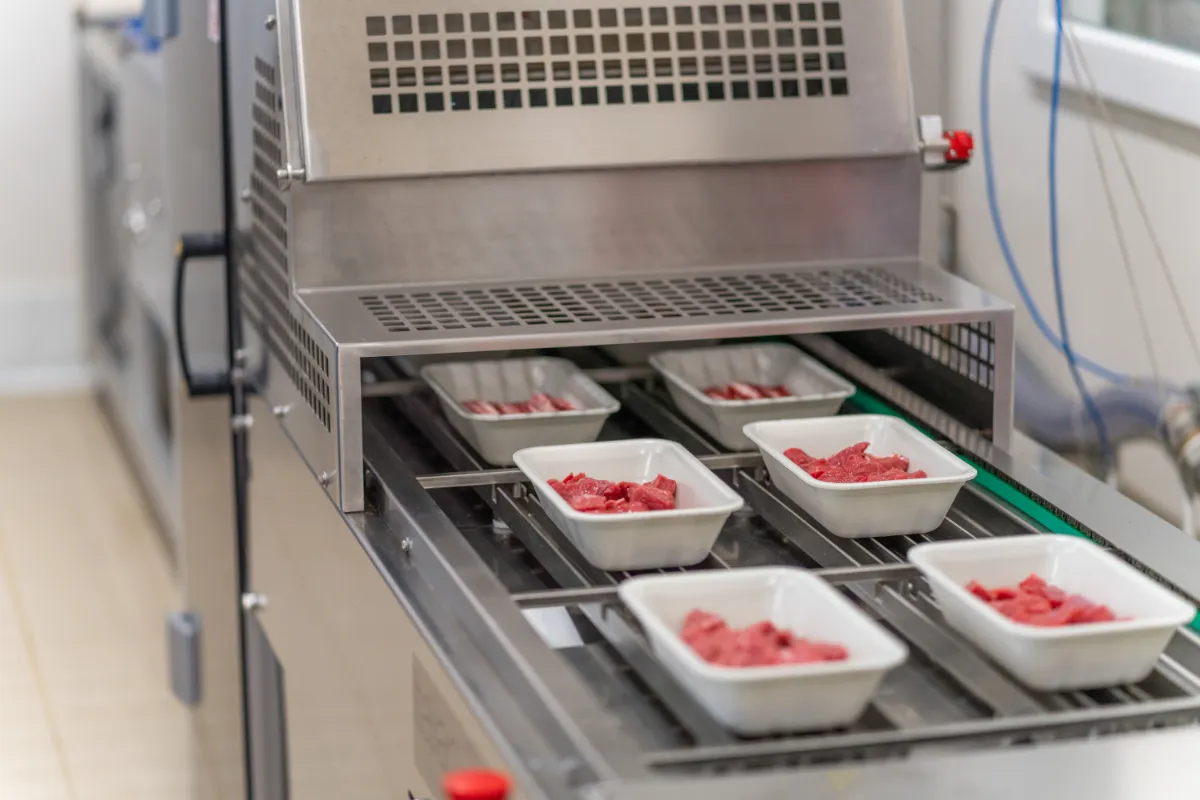
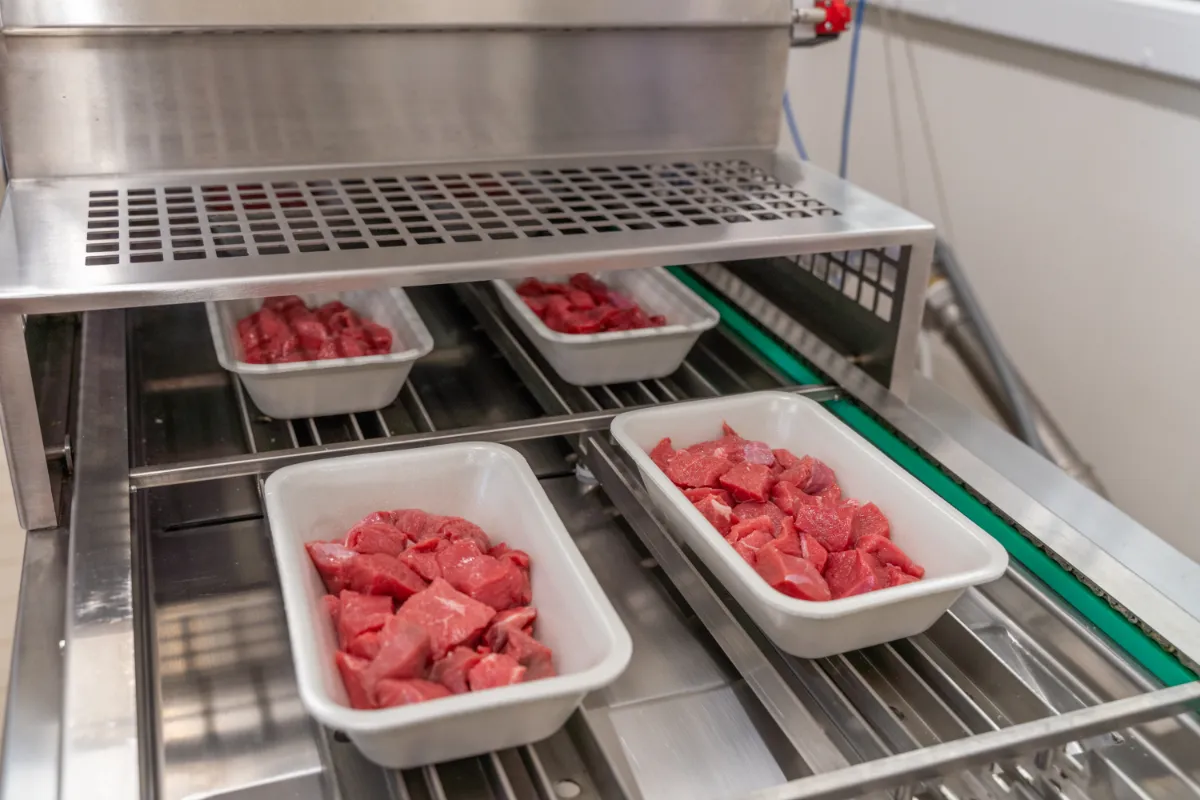
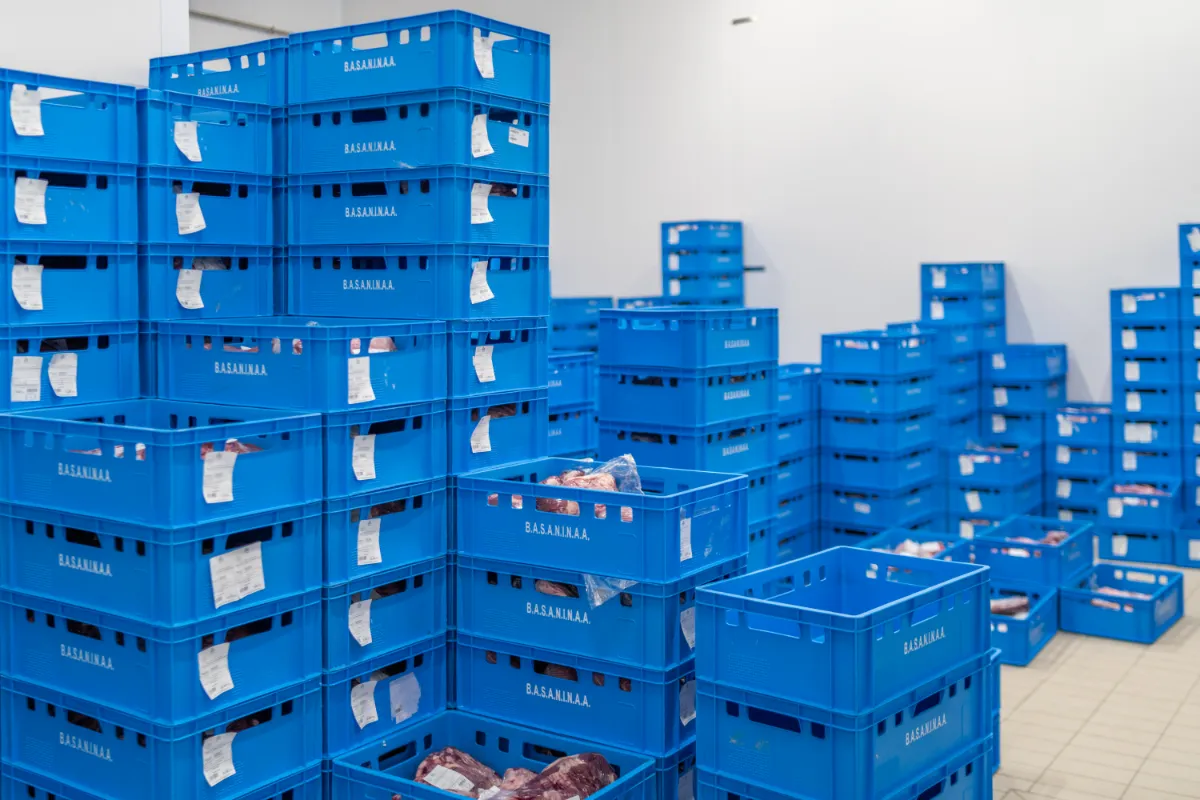
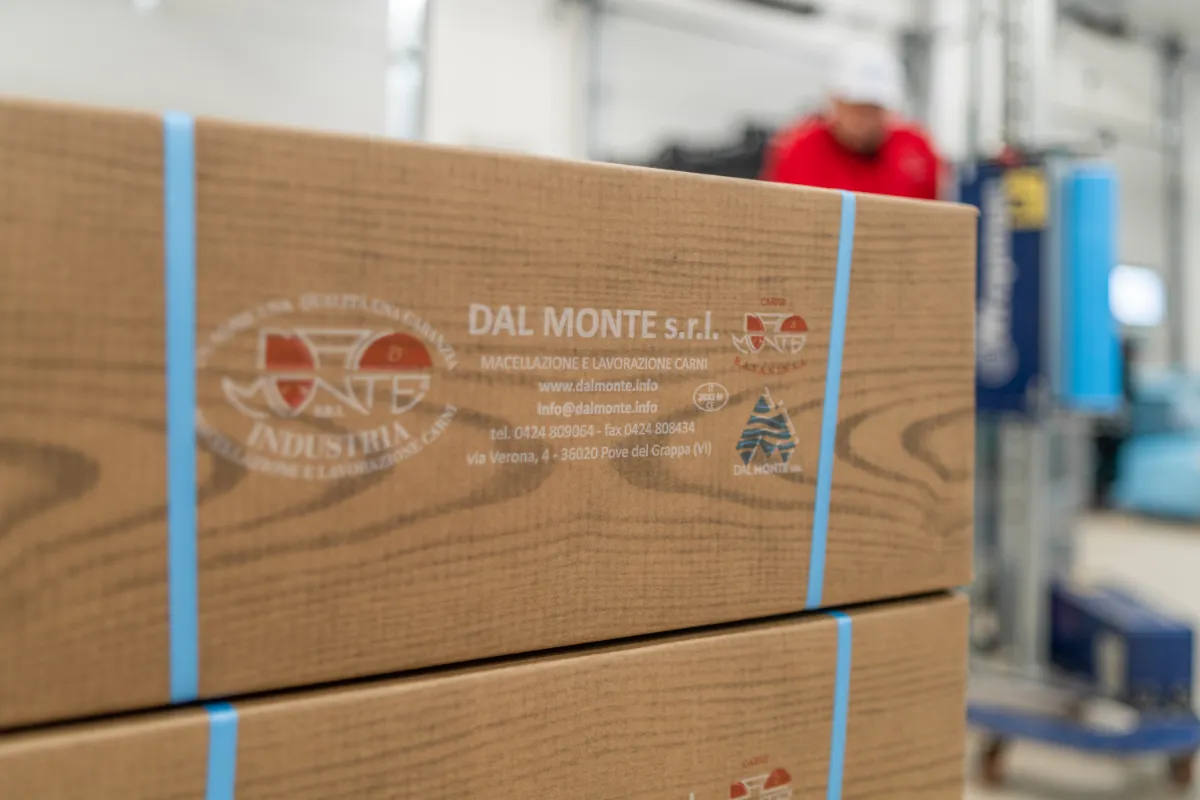
Stages of preparation
Ground / pastin
1.
Grinding
The shredded meat, is fed into meat grinders, one or more times, in order to obtain a product with the desired grain size.
2.
Adding ingredients, kneading
For ground products, the meat and tanning are fed directly into the kneading machine.
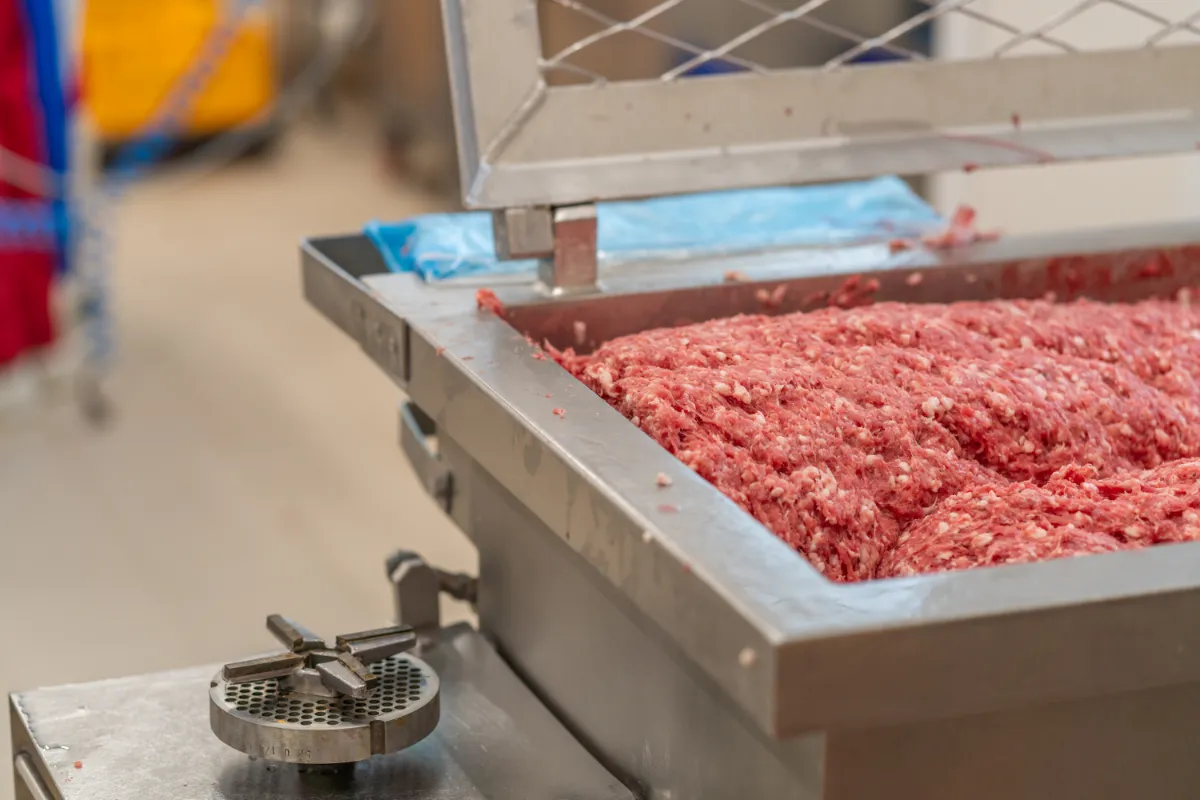
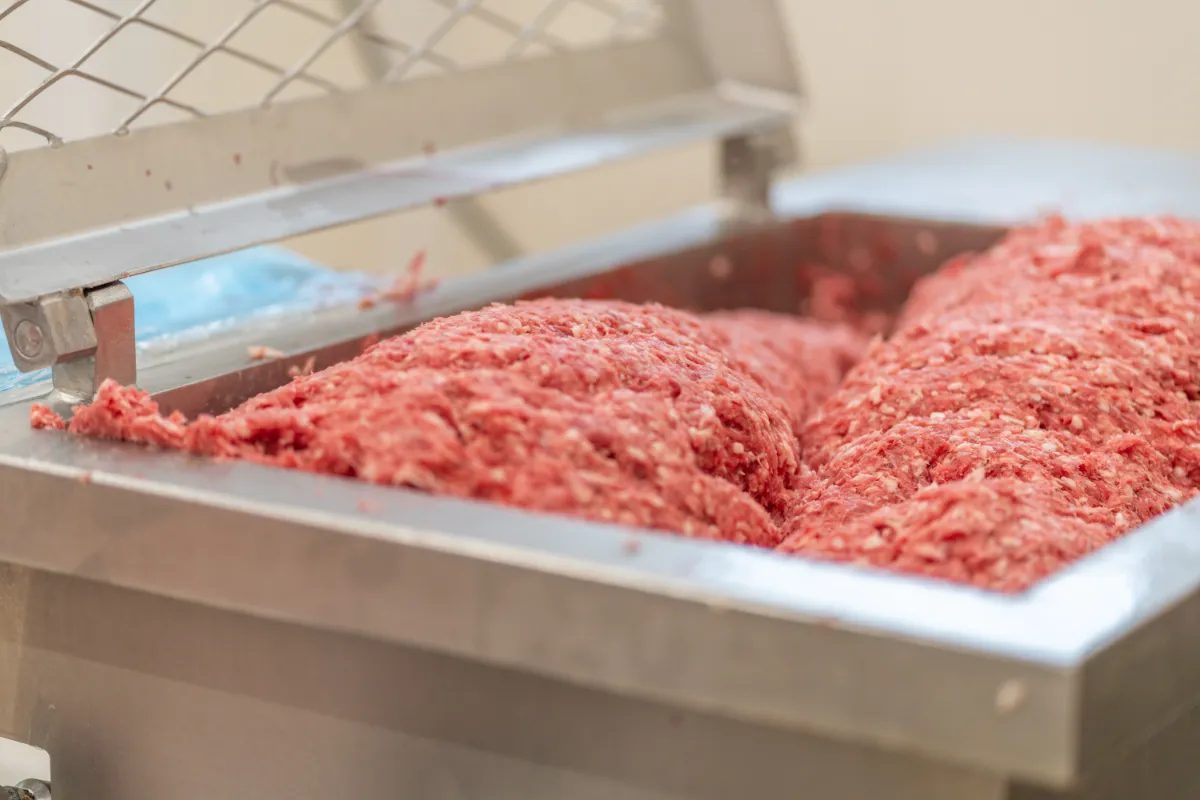
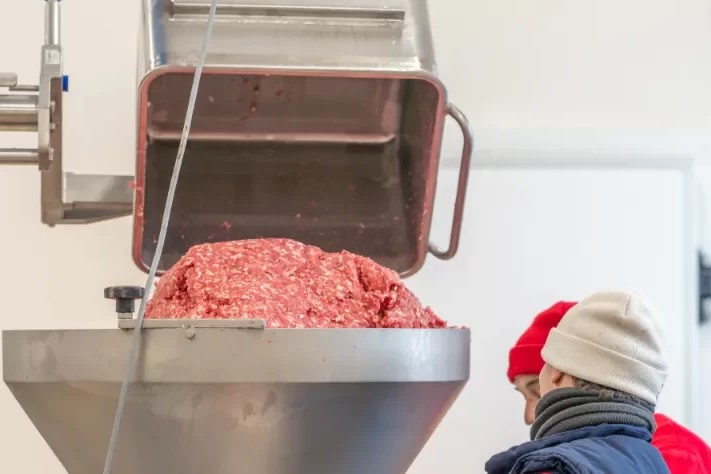
Stages of preparation
Hamburger
1.
Grinding
The shredded meat, is fed into meat grinders, one or more times, in order to obtain a product with the desired grain size.
2.
Adding ingredients, kneading
For ground products, the meat and tanning are fed directly into the ‘kneading machine.
3.
Forming
The homogeneous dough is then transferred to the hopper of the burger forming machine , which are transferred to the packaging machines as soon as possible.
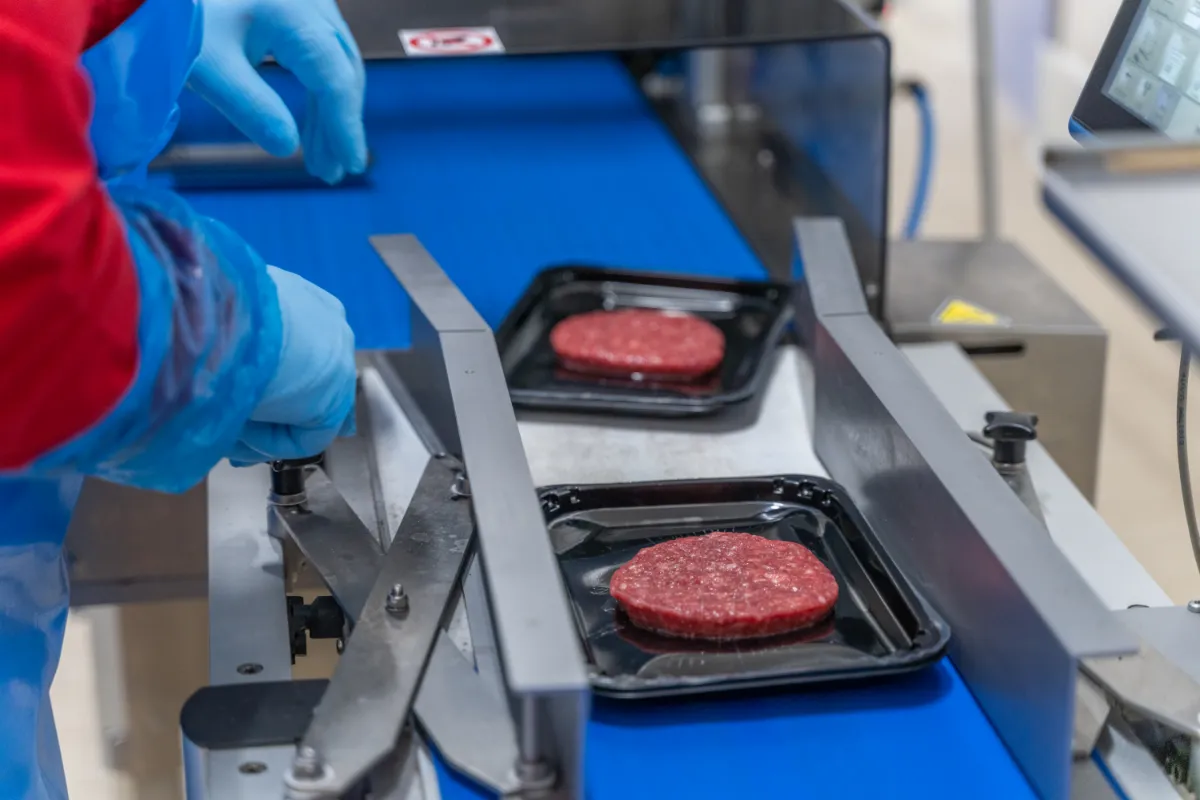
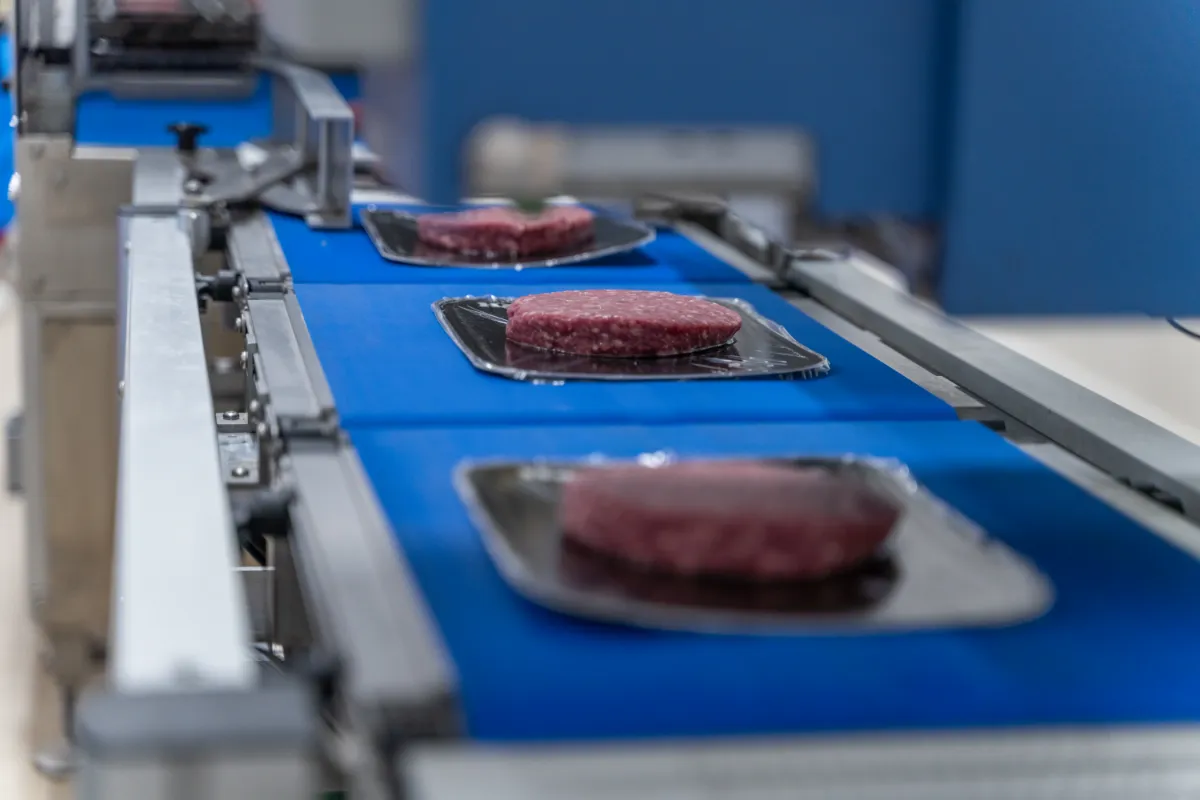
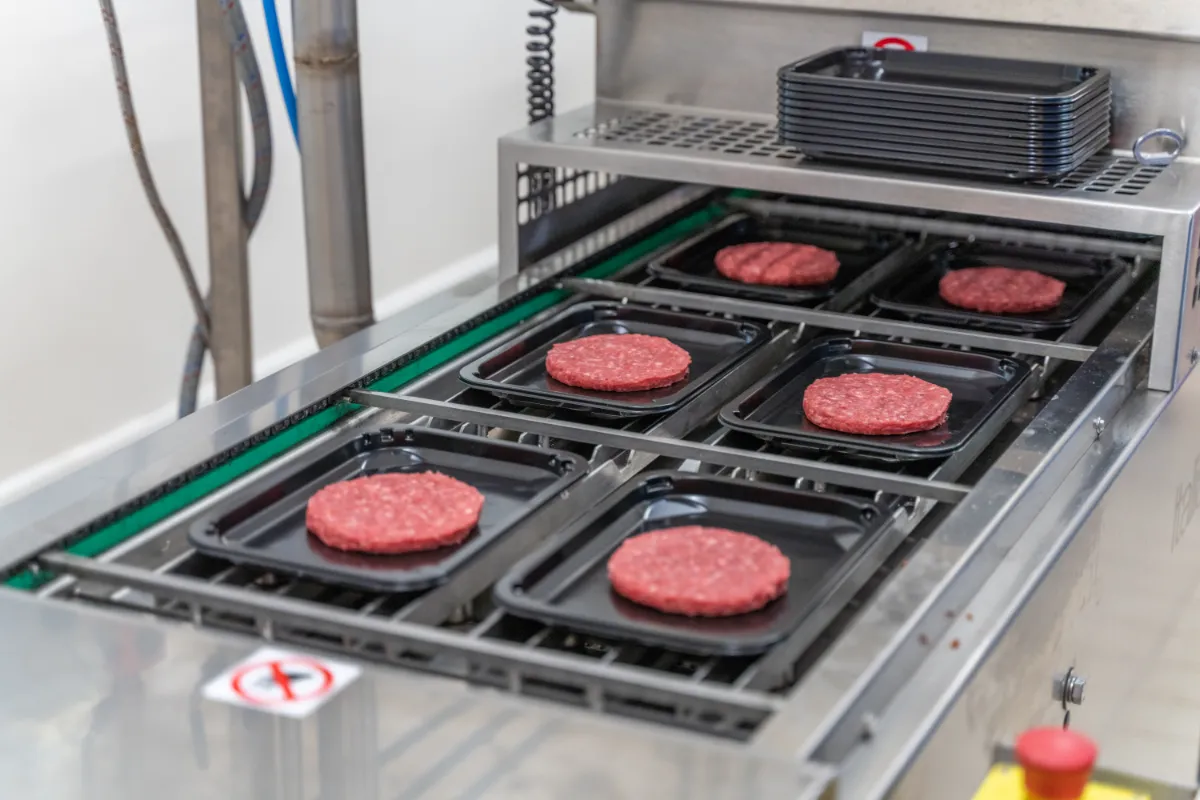
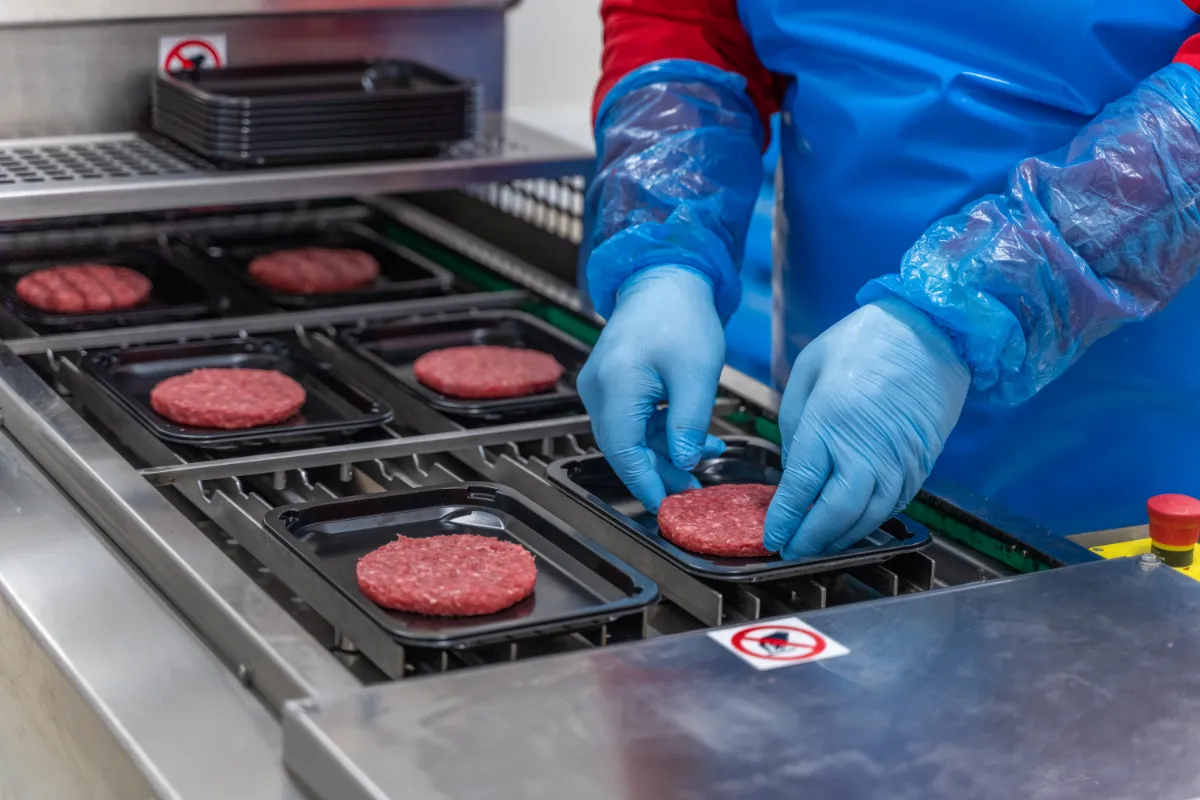
Stages of preparation
Sausages
1.
Grinding
The shredded meat, is fed into meat grinders, one or more times, in order to obtain a product with the desired grain size.
2.
Adding ingredients, kneading
For ground products, the meat and tanning are fed directly into the ‘kneading machine.
3.
Bagging
The casings or collars, are washed or moistened and transferred to the bagging machine.
The homogeneous mixture is then transferred to the hopper of the bagging machine to produce sausages or cotechini, which are transferred to the packaging machines as soon as possible.
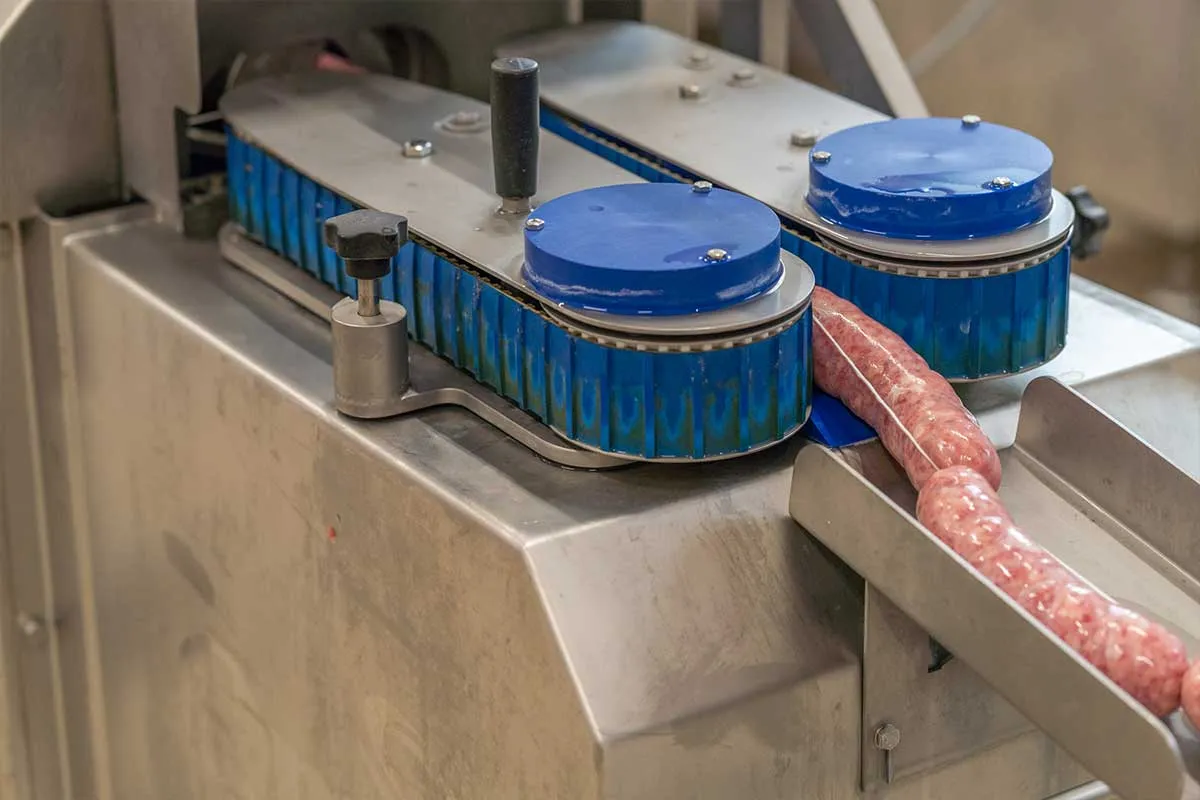
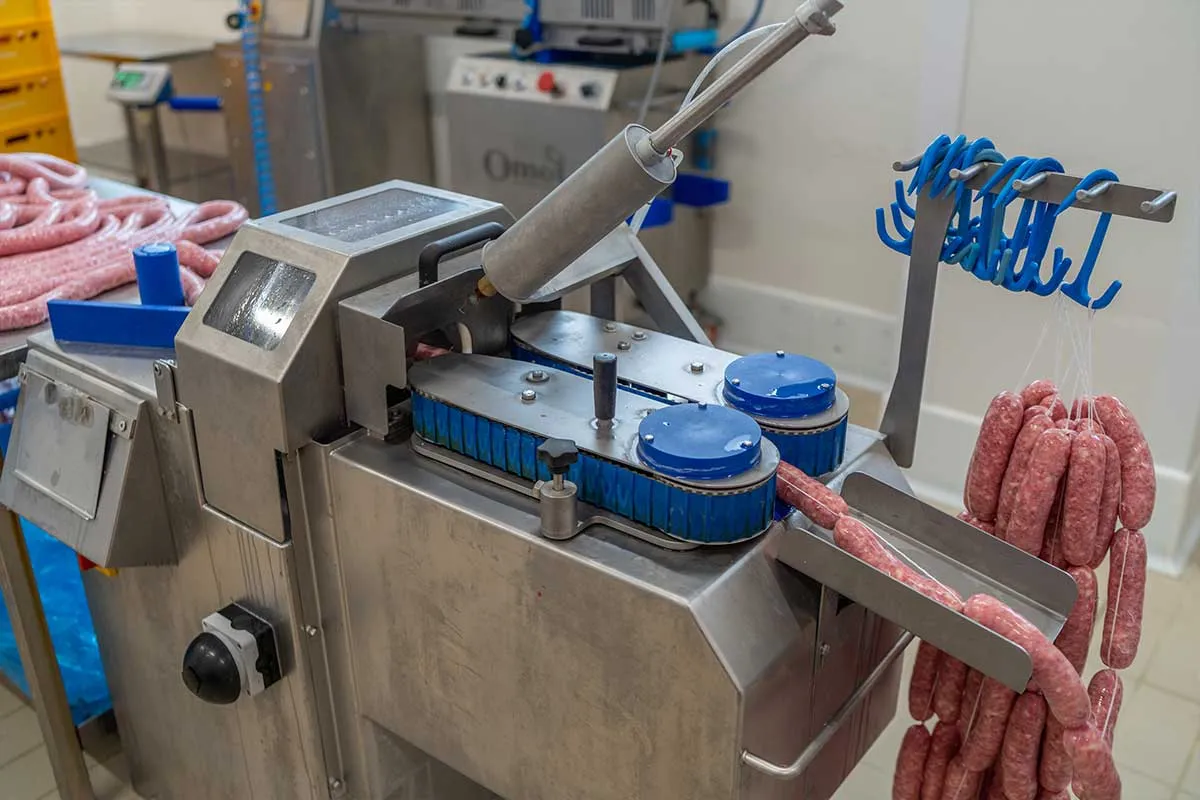
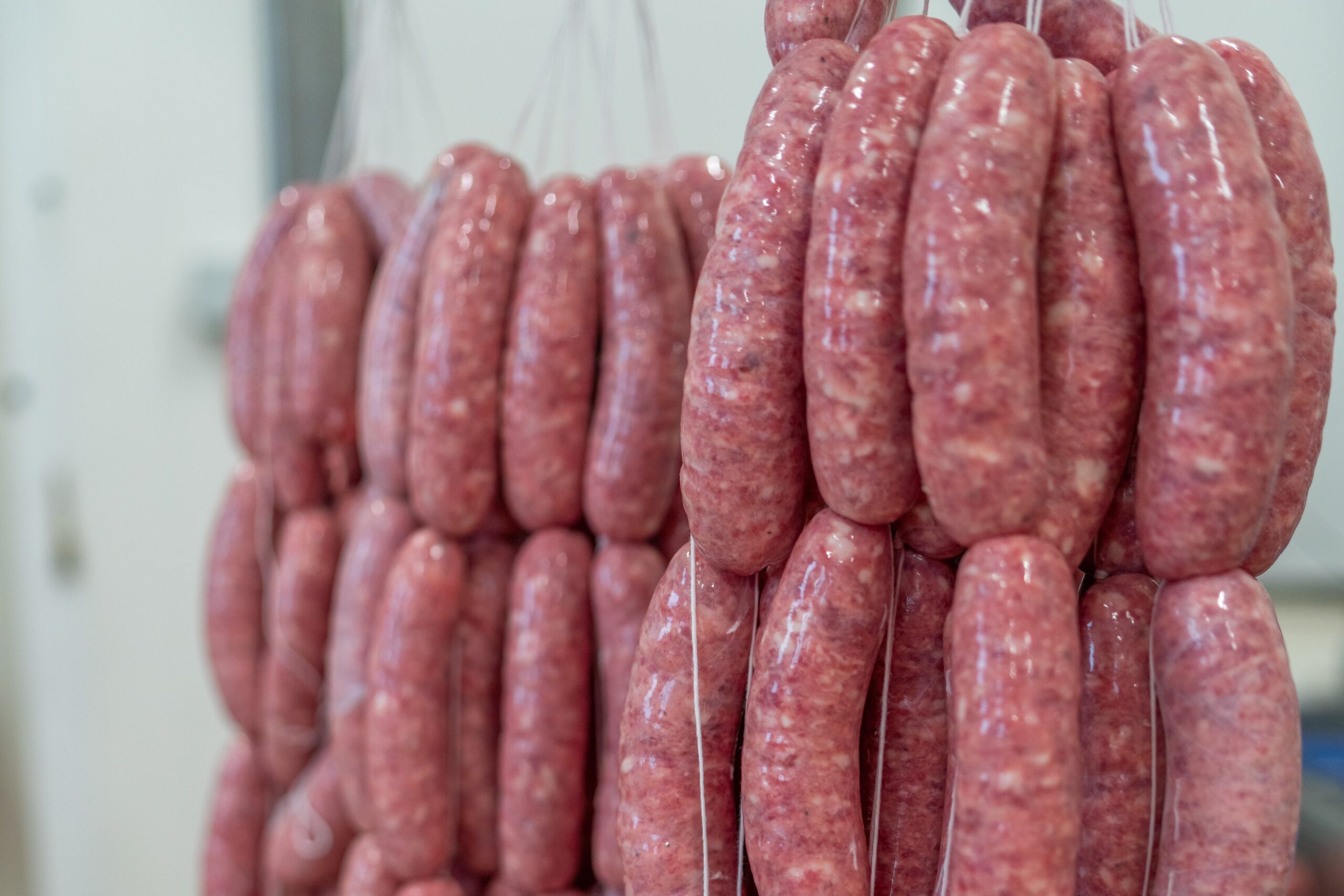
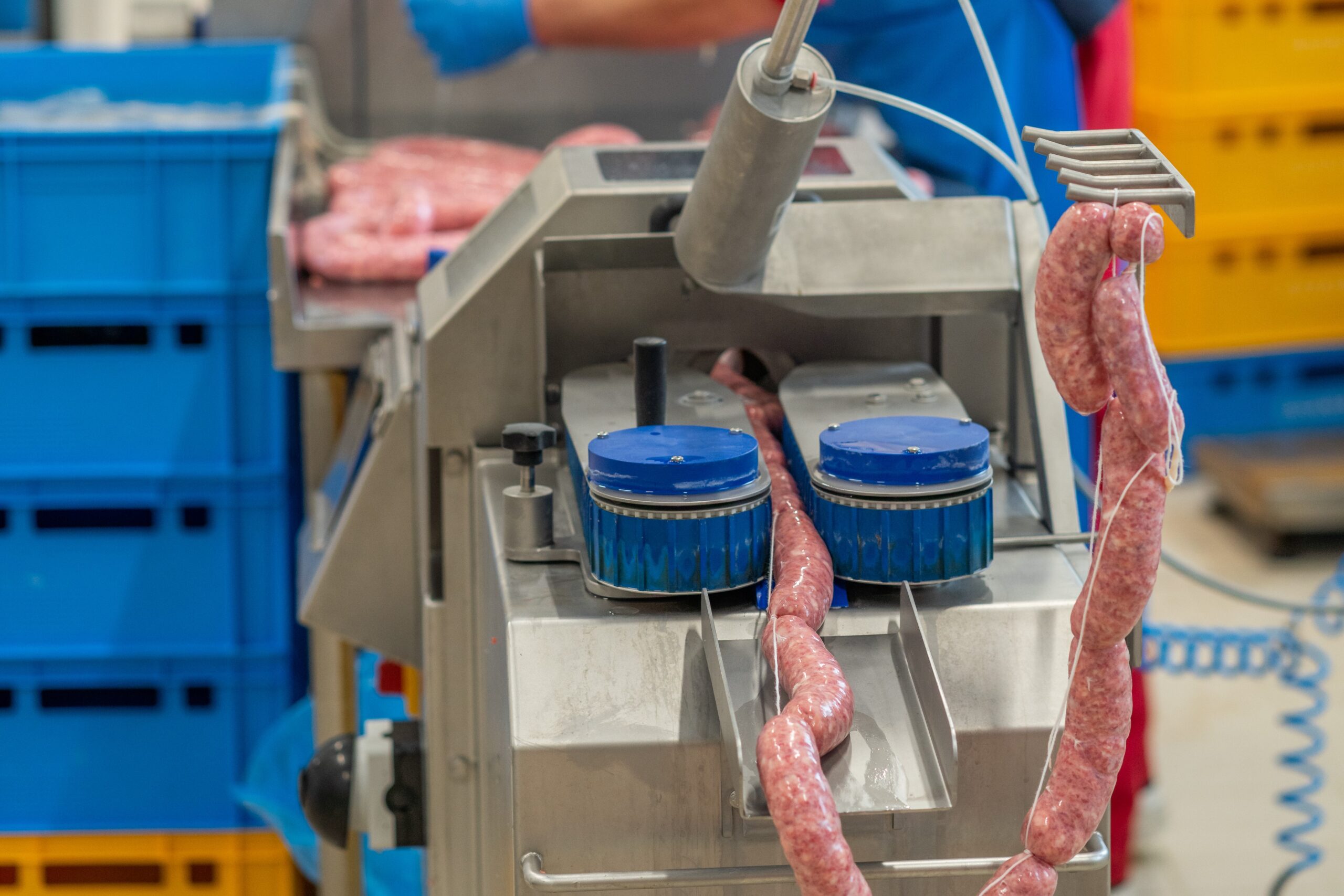
Stages of preparation
Cotechini
1.
Grinding
The shredded meat, is fed into meat grinders, one or more times, in order to obtain a product with the desired grain size.
2.
Adding ingredients, kneading
For ground products, the meat and tanning are fed directly into the ‘kneading machine.
Special attention is paid to the addition of nitrites and nitrates that do not exceed 150 mg/kg of meat
3.
Bagging
The casings or collars, are washed or moistened and transferred to the bagging machine.
The homogeneous mixture is then transferred to the hopper of the bagging machine to produce sausages or cotechini, which are transferred to the packaging machines as soon as possible.
4.
Drying
The product is fed into the drying cell where it remains a variable time up to 7 days, for a weight loss of at least 10-15%




Stages of preparation
Salted walker / salted tongue
1.
Adding ingredients
The tanning ingredients are added to the meat dry.
Special attention is paid to the addition of nitrites and nitrates that do not exceed 150 mg/kg of meat.
2.
Cell storage for marinating
The products, placed in boxes in contact with the added ingredients are stored in a marinating cell for a variable period (up to 45 days), in a refrigerated cell at a maximum temperature of +4°C, awaiting subsequent packaging.
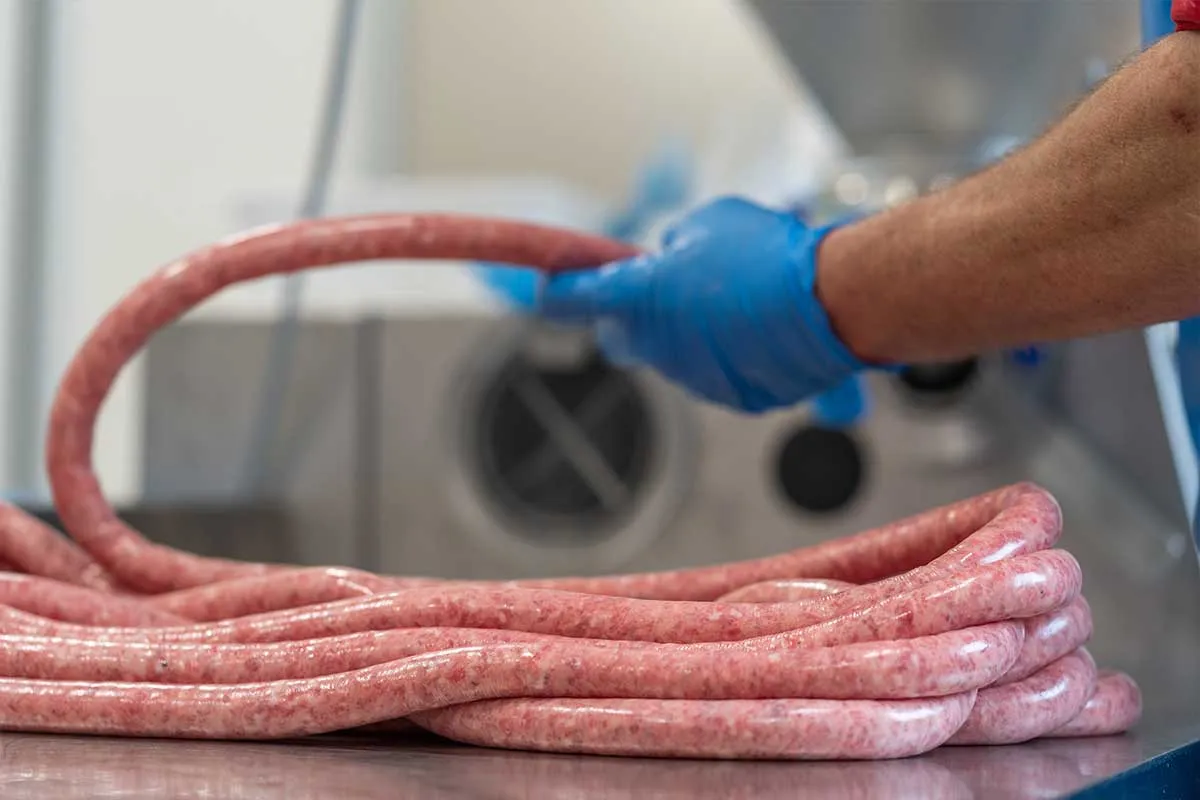
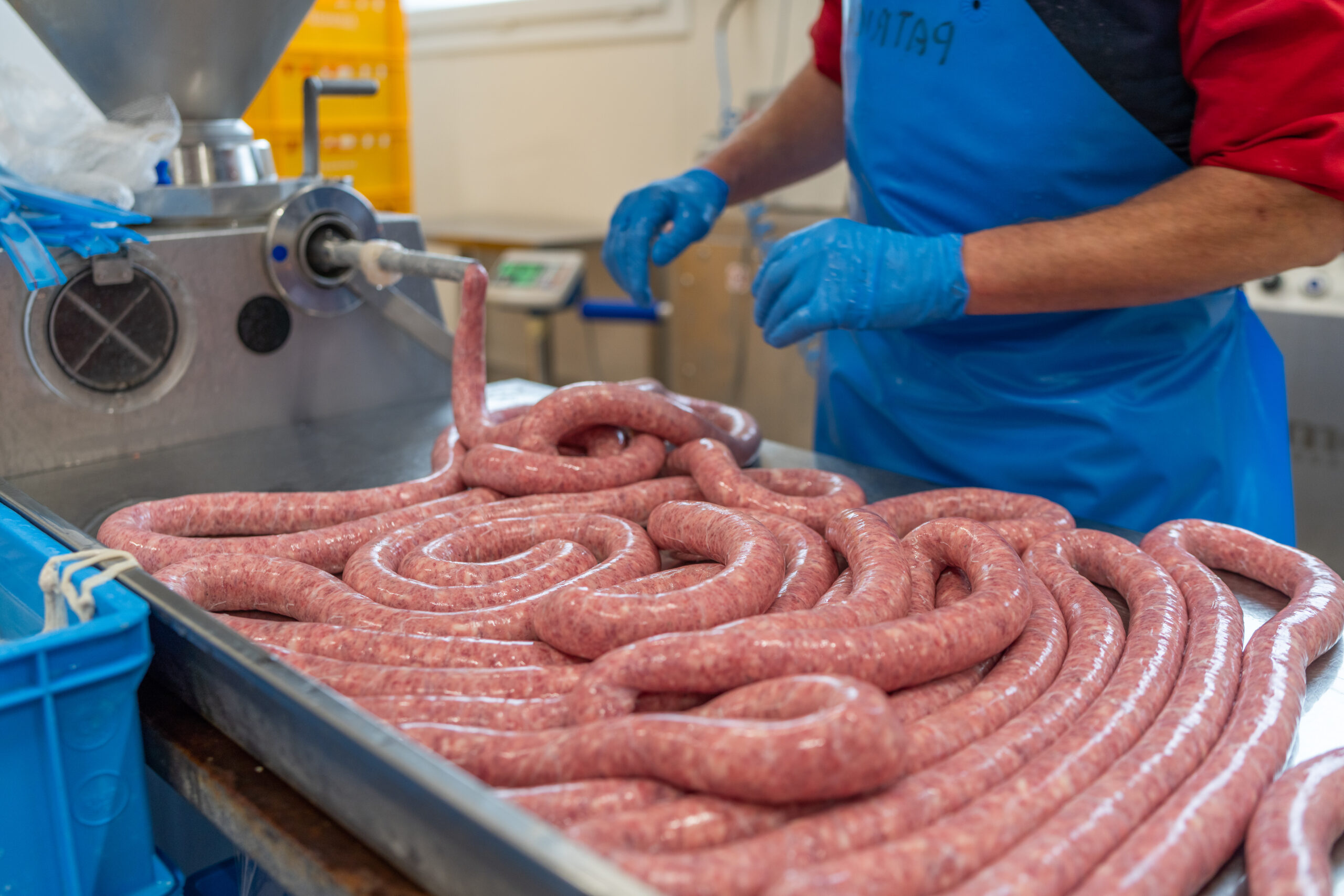
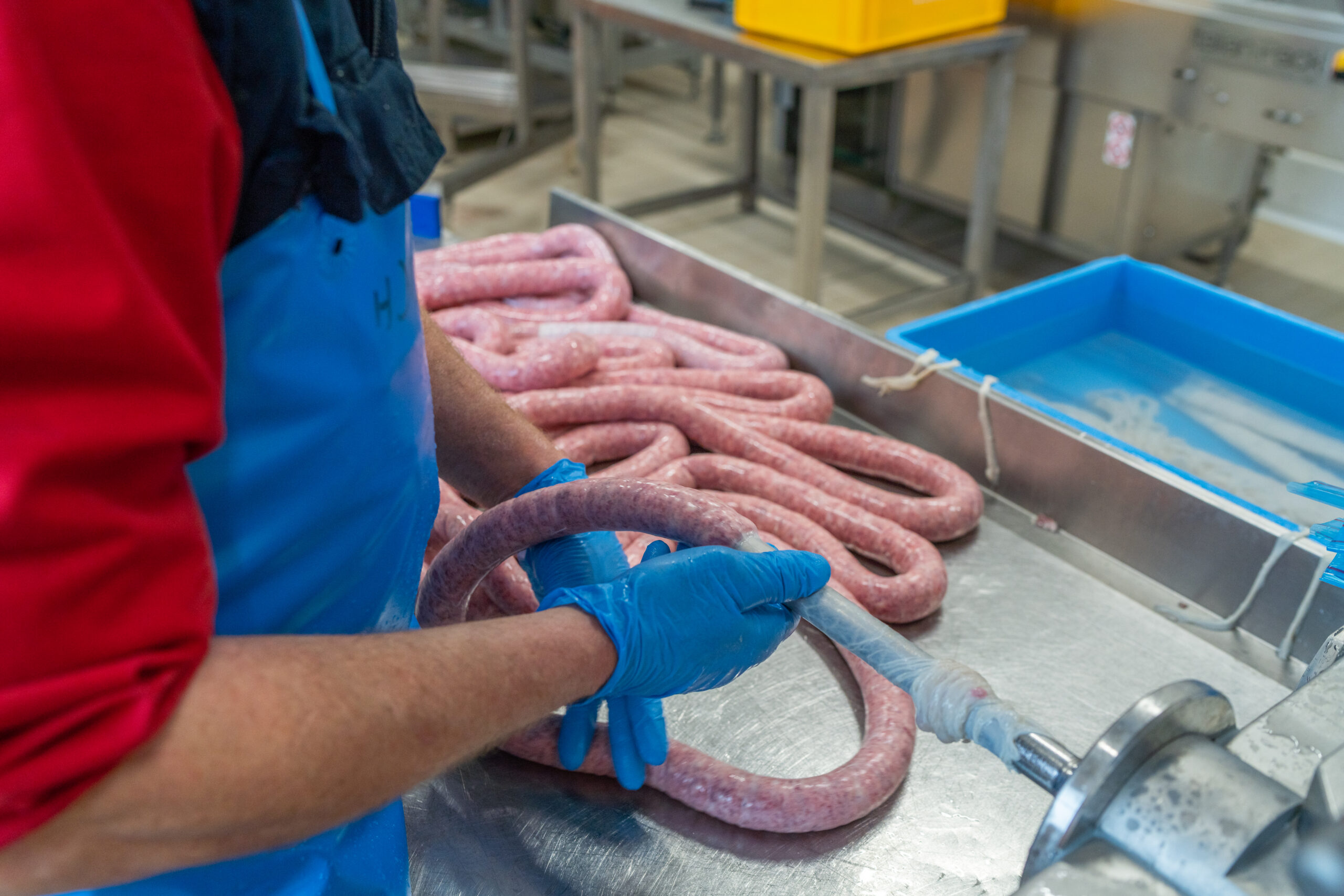
Stages of preparation
Tartare
1.
Adding ingredients
For ground products, the meat and tanning are fed directly into the ‘kneading machine.
Special attention is paid to the addition of nitrites and/or nitrates that do not exceed 150 mg/kg of meat.
2.
Cell storage for marinating
The products, placed in boxes in contact with the added ingredients and microbial starters, are stored in the marinating cell for one day, in a refrigerated room at a maximum temperature of +4°C, awaiting subsequent packaging.
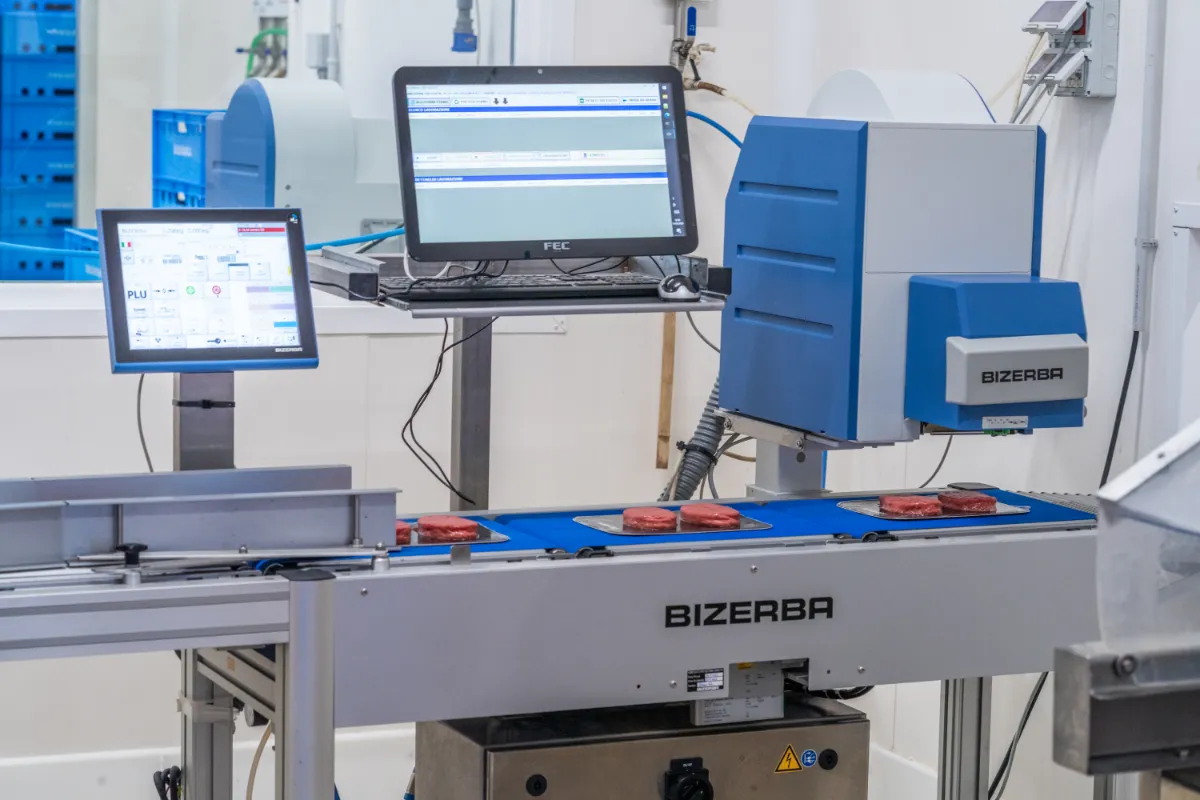
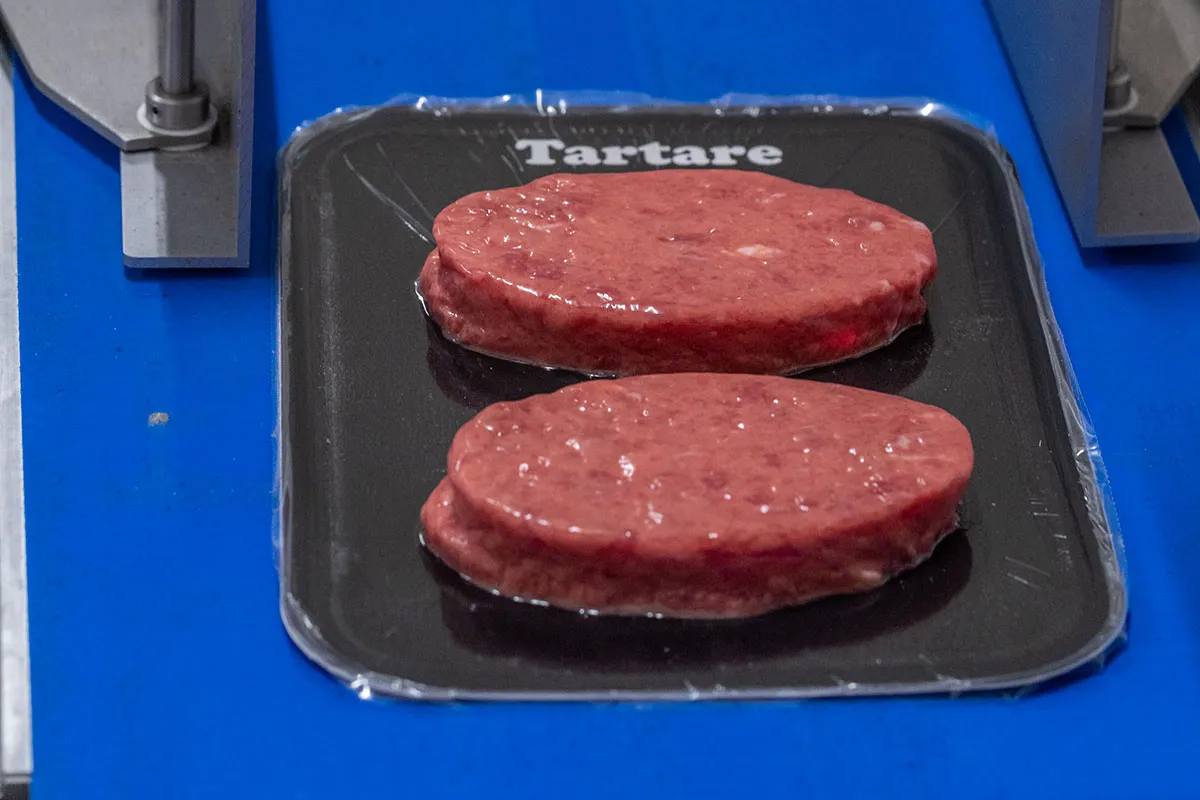
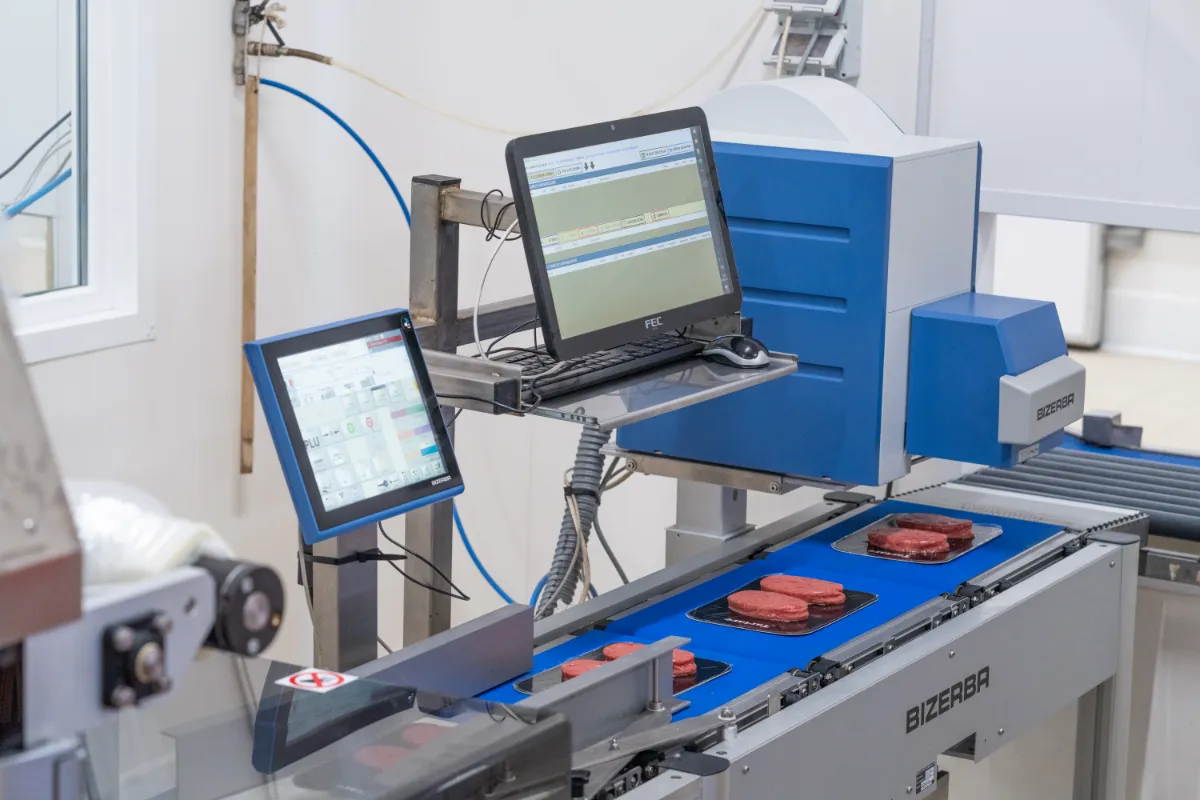

The excellence of Italian meat
We can provide customized solutions for every need, ensuring the highest quality and freshness of products.
Because of our professionalism and expertise, we are the reliable partner for all those seeking a high-quality meat supply chain.


